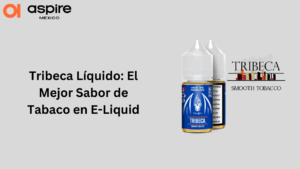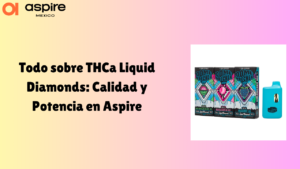Attention-Deficit/Hyperactivity Disorder (ADHD) is one of the most common neurodevelopmental disorders, affecting millions of children and adults worldwide. It is characterized by symptoms such as inattention, hyperactivity, and impulsivity, which can significantly disrupt daily functioning in academic, professional, and social settings. While stimulant medications like methylphenidate (Ritalin) and amphetamines (Adderall) have long been the cornerstone of ADHD treatment, not everyone responds well to these conventional therapies. Furthermore, there is growing interest in exploring unconventional and emerging treatments for ADHD that fall outside of the mainstream options. These alternative medications and therapies may offer hope for individuals who struggle with traditional treatments or who experience significant side effects.
In this article, we will delve into some of the unconventional and emerging medications that are being researched or used in the treatment of ADHD, focusing on their mechanisms, efficacy, and potential benefits.
1. Alpha-2 Adrenergic Agonists: Clonidine and Guanfacine
Alpha-2 adrenergic agonists, such as clonidine and guanfacine, are primarily used as antihypertensive medications, but they have also shown promise as ADHD treatments, especially for children. These drugs work by stimulating receptors in the brain that help regulate norepinephrine and other neurotransmitters, which can play a role in controlling symptoms of ADHD.
Clonidine:
Originally developed to treat high blood pressure, clonidine has been found to help reduce hyperactivity and impulsivity in children with ADHD. It is often used when stimulant medications are either ineffective or cause undesirable side effects, such as insomnia or irritability. Clonidine’s sedating effects can also help children with ADHD who struggle with sleep disturbances.
Guanfacine:
Another alpha-2 agonist, guanfacine (brand name Intuniv), has been FDA-approved for the treatment of ADHD in children and adolescents. It has a similar effect to clonidine but is thought to be more selective, meaning it may have fewer side effects. Guanfacine works by enhancing prefrontal cortex functioning, which is involved in executive functions such as working memory, decision-making, and attention regulation.
Both of these medications offer an alternative to stimulants, especially for children who have co-occurring issues like anxiety or sleep disturbances.
2. Norepinephrine-Dopamine Reuptake Inhibitors (NDRIs): Bupropion
Bupropion (brand name Wellbutrin) is a norepinephrine-dopamine reuptake inhibitor (NDRI) primarily used to treat depression and smoking cessation. Interestingly, there is growing evidence suggesting that bupropion may also be beneficial for ADHD, particularly in individuals who cannot tolerate stimulant medications or who have a history of substance abuse.
Bupropion works by increasing the levels of norepinephrine and dopamine in the brain, two neurotransmitters that play a critical role in attention, motivation, and mood regulation. Studies have shown that bupropion can reduce ADHD symptoms in both children and adults, although it is not FDA-approved specifically for this purpose. It is sometimes used off-label as an alternative to stimulants, especially for individuals with comorbid conditions such as depression or anxiety.
One of the major advantages of bupropion is that it is not addictive and has a lower risk of abuse compared to stimulant medications, which makes it an attractive option for individuals with substance use disorders. Additionally, it can have mood-stabilizing effects, which may be particularly helpful for individuals with ADHD who also experience depression or anxiety.
3. Modafinil: A Wakefulness-Promoting Agent
Modafinil (brand name Provigil) is a wakefulness-promoting agent that is typically prescribed for conditions such as narcolepsy and obstructive sleep apnea. However, due to its ability to enhance focus and cognitive performance, it has also gained attention as a potential treatment for ADHD, particularly in adults.
Unlike traditional stimulants, modafinil has a unique mechanism of action. It works by increasing the availability of dopamine in the brain, but it does so in a more gradual and less direct manner than traditional stimulants. This results in fewer side effects such as jitteriness or anxiety. Modafinil has been shown to improve cognitive performance, attention, and focus in individuals with ADHD, and some studies suggest it may have fewer addictive properties compared to stimulant medications.
However, modafinil is not FDA-approved for ADHD treatment, and its use for this purpose remains off-label. While initial studies show promising results, more research is needed to determine its long-term efficacy and safety in individuals with ADHD.
4. The Role of Cannabinoids in ADHD Treatment
Cannabis and cannabinoids have been the subject of growing interest in the treatment of various medical conditions, including ADHD. While the relationship between ADHD and cannabis use is complex—cannabis use is sometimes seen as a way for individuals with ADHD to self-medicate—it is also worth exploring the potential therapeutic effects of specific cannabinoids.
CBD (Cannabidiol):
Unlike THC (tetrahydrocannabinol), which has psychoactive effects, CBD is non-psychoactive and is believed to have neuroprotective and anti-anxiety properties. Some studies suggest that CBD may help reduce hyperactivity, impulsivity, and anxiety in individuals with ADHD. It is thought that CBD may work by influencing the brain’s endocannabinoid system, which regulates mood, attention, and memory.
THC (Tetrahydrocannabinol):
While the use of THC in ADHD treatment is controversial due to its psychoactive effects, there is emerging evidence suggesting that low doses of THC may help improve focus and reduce anxiety in some individuals. However, the use of THC in ADHD treatment requires caution, as it can exacerbate certain symptoms, particularly in adolescents.
Although cannabinoid-based treatments hold potential, research in this area is still in its infancy. As with other alternative treatments, more rigorous clinical trials are needed to fully understand the risks and benefits of cannabinoids for ADHD.
5. Ketamine and Its Potential in ADHD Treatment
Ketamine, a dissociative anesthetic, is best known for its use in surgical procedures and as a treatment for depression. In recent years, however, it has gained attention for its potential in treating various psychiatric conditions, including ADHD. Ketamine acts on the NMDA (N-methyl-D-aspartate) receptors in the brain, which are involved in mood regulation, learning, and memory. Preliminary research suggests that ketamine may have rapid-acting effects on symptoms of ADHD, particularly in adults.
Ketamine’s potential as an ADHD treatment is still being explored, but it has shown promise in addressing co-occurring issues such as depression, anxiety, and executive function impairments. As with other unconventional treatments, the use of ketamine for ADHD remains experimental, and more research is needed to assess its safety and efficacy.
6. Psychostimulant Alternatives: L-Theanine and Rhodiola Rosea
For individuals looking for non-pharmacological options to complement traditional ADHD treatments, natural compounds such as L-theanine and Rhodiola Rosea are gaining popularity.
L-Theanine:
Found in green tea, L-theanine is an amino acid known for its calming effects. It is thought to enhance the production of alpha waves in the brain, which are associated with a relaxed yet alert state. Some studies have suggested that L-theanine can help improve attention and reduce stress, making it a potential adjunctive treatment for ADHD.
Rhodiola Rosea:
An adaptogenic herb used in traditional medicine, Rhodiola Rosea is believed to enhance mental clarity, reduce fatigue, and improve focus. Some preliminary research suggests that Rhodiola may be beneficial for individuals with ADHD, particularly in terms of reducing mental fatigue and improving cognitive performance.
While these natural supplements are not a substitute for conventional ADHD treatments, they may offer benefits when used as part of a broader therapeutic strategy.
Conclusion
The landscape of ADHD treatment is evolving, and unconventional therapies are beginning to gain traction. While stimulant medications remain the gold standard for many individuals, emerging treatments such as alpha-2 adrenergic agonists, norepinephrine-dopamine reuptake inhibitors, and even cannabinoids offer promising alternatives. However, as with any medical treatment, it is essential to work closely with a healthcare provider to determine the best course of action. Research into these unconventional treatments is still in its early stages, and while they may offer benefits for some, their safety and efficacy require further investigation. As science progresses, it is likely that ADHD treatment will become increasingly personalized, allowing individuals to find the most effective solution for their unique needs.







